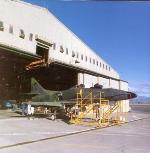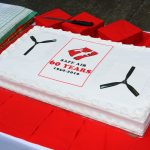History
For more than 65 years, SAFE Air has upheld a reputation of excellence and innovation in the New Zealand and international aviation industry.
SAFE Air’s story began in 1950 on the beautiful Wairau Plains of Marlborough near Blenheim, where the company is still based today. In that year, in response to a need for a faster freight service across Cook Strait, Straits Air Freight Express was originally established as a cargo airline. Its first two bull-nosed Bristol 170 freighters, a fleet which grew to 13, proved perfect for the job, as their large but innovative internal structures allowed quick change or variations in  combinations of people and freight. The Bristols often took a number of back-to-back trips every day across the Strait, and for many years their unique profile were an iconic daily feature of Marlborough’s skyline. In 1967, SAFE Air expanded its operations by acquiring a licence to carry paying passengers. This began with a service from New Zealand’s capital, Wellington, to the Chatham Islands, before other routes were established.
combinations of people and freight. The Bristols often took a number of back-to-back trips every day across the Strait, and for many years their unique profile were an iconic daily feature of Marlborough’s skyline. In 1967, SAFE Air expanded its operations by acquiring a licence to carry paying passengers. This began with a service from New Zealand’s capital, Wellington, to the Chatham Islands, before other routes were established.
SAFE Air’s first military contract came in 1968 – one that would pave the way for SAFE Air as we know it today. SAFE Air’s location had always been shared with the Royal New Zealand Air Force’s Base Woodbourne, and SAFE Air’s growing operation had caught the attention of the military side. That year, a 12-month agreement to overhaul the RNZAF’s Bristol airframes and repair engines was made. This contract was repeated a year later, and the work continued until 1976, when it was followed by a contract to overhaul the military’s de Havilland Devons, which would continue until 1980. Back in the SAFE Air hangars, in 1973 the company, by then owned by National Airways Corporation (which later merged with Air New Zealand), acquired two series 222 Argosies: The Merchant Pioneer and the Enterprise. These aircraft were pressurised and could take more freight than the Bristols.
1980. Back in the SAFE Air hangars, in 1973 the company, by then owned by National Airways Corporation (which later merged with Air New Zealand), acquired two series 222 Argosies: The Merchant Pioneer and the Enterprise. These aircraft were pressurised and could take more freight than the Bristols.
A major achievement was realised in 1987 when SAFE Air entered a huge, 38-month military subcontract to install and test updated navigation on the Royal New Zealand Air Force’s 21 A4 Skyhawks. Three years later, on 17 August 1990, SAFE Air’s operations underwent another major pivotal shift when General Manager Ron Tannock announced flying operations would cease within a month and the company would reform as an aircraft maintenance facility only. It was a decision that would prove highly successful. In the years to follow, the now grounded SAFE Air undertook further major military contracts which would hugely increase the company’s capabilities and become an aviation maintenance company of international repute. This included work on the ANZAC frigates, running RNZAF Base Woodbourne’s heavy maintenance facilities (which continues today), the RNZAF and Royal Australian Air Force Seasprite acquisition programme and Boeing checks.

SAFE Air 60th Birthday
SAFE Air personnel have demonstrated regularly that they can apply their expertise across a wide range of aircraft types, shapes and sizes, whilst currently concentrating on airframes and engines heavy maintenance for the RNZAF (supporting both fixed wing and rotary aircraft), the propeller and component workshops are providing support to a huge range of customers, from single light aircraft projects to fleet engineering design and component repair support to major airlines and operators.
In 2015, SAFE Air was purchased by Airbus. This partnership has enabled us to further expand our horizons further and continue to grow in capability and expertise across a large breadth of aircraft types.
SAFE Air was born out of a spirit of innovation. This is what continues to drive SAFE Air today.



